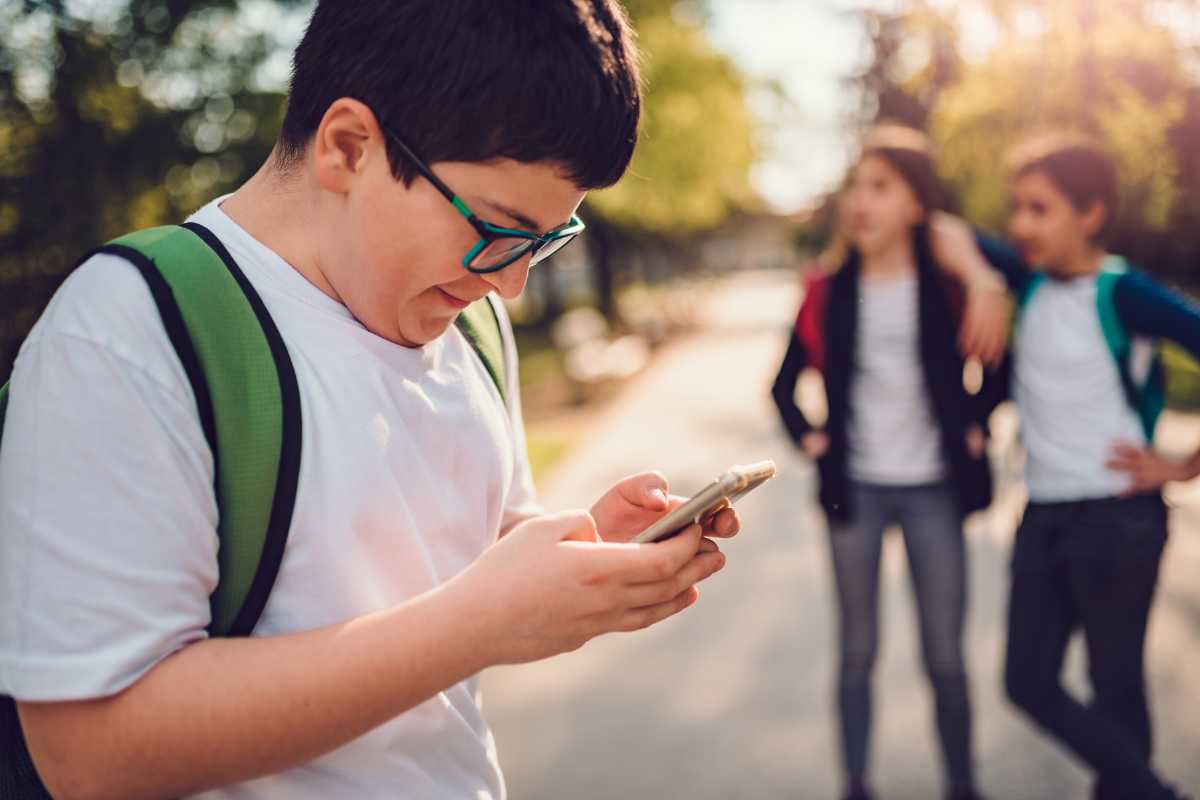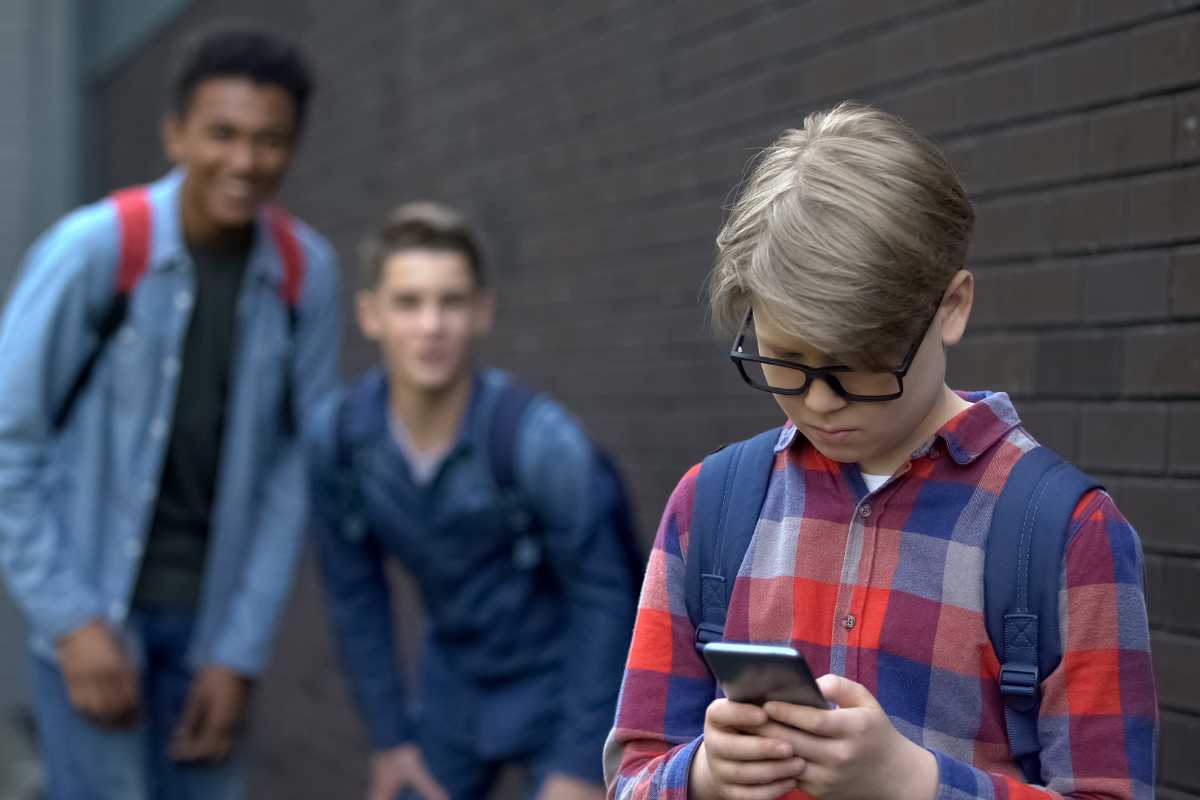
How Many Kids Get Cyberbullied a Year? (Detailed Statistics)
Posts by Colin TanSeptember 17, 2023
Bullying is bullying no matter where it occurs. Bullying happens in person and online, which is an overarching problem across the globe.
The fact is that regardless of whether it happens at work, school, home, or on the internet, bullying is bullying.
The only real difference in bullying online and offline is that online bullying is referred to as “cyberbullying”, which is appropriate for the space in which it happens.
One of the biggest problems with cyberbullying is that there isn’t enough awareness of it because it’s simply not spoken of among “civilized” people.
Let’s face it, bullies (online or offline) aren’t civilized.
They are bullies.
While bullying and cyberbullying is minimized, the victims are terrorized.
To make things worse, there is a horrible stigma attached to victims who have been or are being bullied.
It’s not a joke, nor is it fun or funny when someone is seriously harmed by bullying behaviors.
In this article, we will discuss how many kids get cyberbullied a year along with other statistics that confirm the prevalence and consequences of internet harassment.
Let’s bring awareness to this topic.
Key Statistics
- One study revealed that 73% of students feel they have been bullied.
- 90% of American teenagers feel cyberbullying is a real problem.
- 23% of middle school and high school students have experienced cyberbullying over the last 30 days.
- 32% of teenagers have experienced offensive name-calling.
- More than 37% of children have experienced cyberbullying.
- 70% of teenagers say they experienced rumor-based cyberbullying.
- 19% of adolescents aged 10 to 17 reported online aggression cyberbullying.
- 25% of the globe’s adult population is unfamiliar with cyberbullying.
- 17% of teenagers said they got sent unwanted explicit pictures.
How Many Kids Get Cyberbullied a Year?

1. One Study Revealed that 73% of Students Feel They Have Been Bullied.
We live in the digital age where technology thrives, but we still have cyberbullying in 2024.
In fact, 73% of students in a recent survey said they felt they have been bullied in their lives.
Another 44% reported that they had been cyberbullied in the last 30 days.
Therefore, the problem is big and it’s real.
(Broadband Search)
2. 90% of American Teenagers Feel Cyberbullying Is a Real Problem.
The Pew Research Center found that 90% of teenagers in America say that online harassment is a problem for individuals in their age group. Another 63% said they believe online harassment to be a major issue.
Most of these teens also think that teachers, social media companies, and politicians have been unsuccessful thus far in handling cyberbullying.
(DataProt, Pew Research Center 2018)
3. 23% of Middle School and High School Students Have Experienced Cyberbullying Over the Last 30 Days.

While not all students report cyberbullying, 23% of middle school and high school students who did report online bullying said they have been targeted in the past 30 days.
This figure is an increase of 55% since 2015 also it’s more than tripled since 2007.
Another 45.5% of this same group said they have been cyberbullied at least once.
(Exploding Topics)
4. 32% of Teenagers Have Experienced Offensive Name-Calling.
A 2022 report from Pew Research found that name-calling was one of the top common types of cyberbullying.
In fact, 32% of teens reported that they experienced name-calling. This is at the top of the list of overall cyberbullying types.
This includes teenagers who experienced cyberbullying online or on their phones.
(Pew Research 2022)
5. Cyberbullying Is the Number One Priority Among School Faculty and Staff Members.
Cyberbullying instances vary all over the globe, but the fact that these cases are unthinkable.
Let’s look at some differences across the globe.
In the U.S., 15% of students have reported cyberbullying. In Britain, 34% of adolescents have been cyberbullied in mobile games.
Moreover, 75% of Romanian students reported less cyberbullying since the pandemic. In Russia, 25% of students aged 14 and older were cyberbullied.
(Panda Security)
6. More than 37% of Children Have Experienced Cyberbullying.

Data revealed that more than 37% of children have been cyberbullied at least once in their lives.
Cyberbullying includes actions of harassment, humiliation, embarrassment, rumors, and images or videos of embarrassing incidents.
Cyberbullying, like in-person bullying, leaves a lasting impact on its victims. Some of the feelings that come from this issue include sadness, depression, anxiety, anger, frustration, and other negative emotions.
Cyberbullies also leave their victims feeling lonely and alone.
(Social Media Victims)
7. 70% of Teenagers Say They Experienced Rumor-Based Cyberbullying.
Spreading rumors is another type of cyberbullying.
In fact, 70% of teenagers reported that a cyberbully had spread rumors about them.
While children and teens aren’t the only people targeted by cyberbullies, they are the most vulnerable group to this problem.
(Broadband Search)
8. 19% of Adolescents Aged 10 to 17 Reported Online Aggression Cyberbullying.

Online aggression is another form of cyberbullying behavior.
It’s a form of online aggression that occurred to 19% of adolescents aged 10 to 17 over the past year.
This data comes from a recent survey about bullying among adolescents.
This represents around one-fifth of the adolescents surveyed.
(DataProt)
9. 25% of The Globe’s Adult Population Is Unfamiliar with Cyberbullying.
Sadly, 25% (one-quarter) of the world’s adult population has no idea what cyberbullying is.
This comes from data gathered from an Ipsos poll over more than 20,000 adults across 28 different countries.
This tells us that more awareness is required.
Moreover, 63% of Saudi Arabian adults were completely clueless about cyberbullying.
(Exploding Topics)
10. 17% of Teenagers Said They Got Sent Unwanted Explicit Pictures.

More data from Pew Research in 2022 found that 17% of teenagers received unwanted explicit pictures that they never asked for.
Getting explicit images sent to their phones or social media messaging apps is another form of cyberbullying.
Furthermore, teenagers in this group range in age from 13 to 17.
(Pew Research 2022)
FAQs
What is Cyberbullying?
We understand what bullying is, so take that idea and add it to today’s digital world and you have cyberbullying.
Cyberbullying is taking bullying to the internet by using digital technology to harass, intimidate, or even threaten another person.
Cyberbullying includes behaviors such as humiliating social content shared about a child or teen on social media, spreading rumors about people online, or through embarrassing content on social media on video or in an image.
The content form doesn’t matter when cyberbullying is used.
What are Signs of Cyberbullying?
Most kids are afraid or ashamed to tell their parents, teachers, or other trusted adults about being bullied, much less being cyberbullied.
That said, here are the signs to look for when your child or teenager is being cyberbullied.
• Mood and behavioral changes like being anxious, depressed, or withdrawn.
• Sleeping and concentration issues.
• A loss in activities they used to love doing.
• More than usual social isolation.
• Self-harming behavior.
While some of these are common among teens, the signs are increased and more obvious than regular teen angst.
Keep your eyes open to the signs.
What Can You Do If You are Being Cyberbullied?
Here are some things you can do if you are personally being cyberbullied.
• Speak to a teacher, counselor, parent, or trusted adult.
• Save evidence of cyberbullying like saving messages, taking screenshots when necessary, and by saving emails with harassing or threatening text or images.
• Block cyberbullies on social media, forums, and other online venues where it’s available to do so.
• Reach out to resources such as the NCMEC (National Center for Missing and Exploited Children) and/or the Cybersmile Foundation for help.
You may want to save this list to show to your children.
What Can You Do to Prevent Cyberbullying?
We also want to address how you can mitigate or prevent cyberbullying.
• Be cautious about what you share online.
• Be mindful of the people you are friending on social media.
• Check and update your privacy settings on social media, email, and other online accounts.
• Parents need to teach their children about cyberbullying and how to be safe online.
Conclusion
Cyberbullying is another form of bullying that occurs online.
Teenagers, children, and adolescents are targeted and sometimes bombarded by various types of cyberbullying activities.
No form of bullying or cyberbullying is acceptable.
Awareness needs to be increased and schools need to prioritize this issue from pre-school and kindergarten to high school and into college.
Most victims of cyberbullying are children and teenagers, but college students and adults of all ages are not immune to this problem.
It’s important to know the signs before you can deal with it.
Now that you know what cyberbullying is, what types there are, and that young people are the most targeted, you can start spreading awareness and start preventing it from continuing.
We shared some resources and tips for mitigating and preventing cyberbullying with you so you can be part of the cure instead of ignoring the problem.
Let’s all do our part to reduce and eliminate cyberbullying.
We hope we have enlightened you to the serious harm that can be done to others by cyberbullies and how to mitigate the problem.
